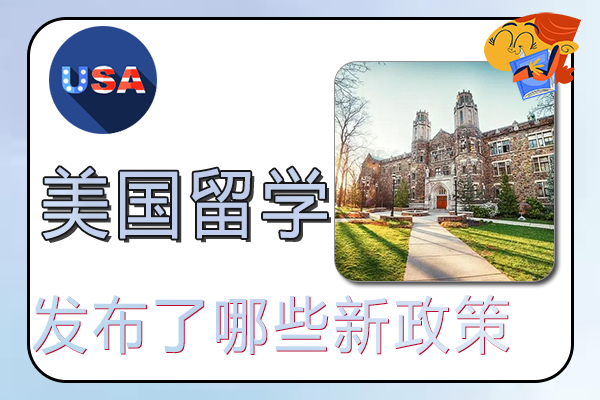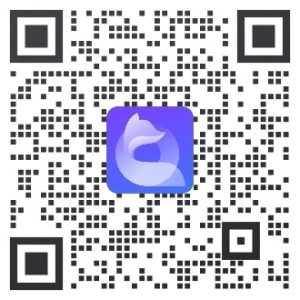Although there are many countries for studying abroad, most people still choose the United States as their main destination. So, what new policies has the United States issued for studying abroad?What new policies have been issued by the United States?Elite Study Abroad Policy in the United States, ,Policy for Party Members’ Children to Study in the United States, ,The Latest Interpretation of US Study Abroad Policy, ,The latest study abroad policy for American students, ,Jining Zoucheng American Study Policy Consultation HotlineThe problem.

What new policies have been issued by the United States for studying abroad?
1. What new policies has the United States issued for studying abroad?
1. Adjustment of U.S. undergraduate entrance exam (SAT/ACT) requirements
For the 2021-2022 application season, the attitudes of American undergraduate schools towards SAT and ACT are mainly:
Students who have already taken the test can continue to submit SAT and ACT scores
Diversified evaluation criteria, not based on hard scores as the main review criteria
Encourage submission of materials that reflect students' strengths other than grades
2. More flexible requirements for US Master's Entrance Examination (GMAT/GRE) and language
Language test: some schools accept DUOLINGO, TOEFL home test, IELTS home test
Graduate entrance examination: Most schools accept home examinations, and some schools do not require GRE/GMAT scores
3. Some universities have added new majors or adjusted their major content
New popular professional colleges and universities among the 50 universities:
The University of Illinois at Urbana-Champaign and the University of Michigan at Ann Arbor are two universities that are very popular with international students and offer BA programs.
Emory University adds analytical finance major
UC Irvine adds data science major
Change of profession:
UCLA changes applied economics major to quantitative economics
4. The U.S. Embassy in China announced the reopening of student visas
On May 4, 2021, the U.S. Embassy in China announced that it would begin issuing student visas and welcome Chinese students to return to the United States.
5. The U.S. Centers for Disease Control and Prevention (CDC) released a new entry policy
The U.S. Centers for Disease Control and Prevention (CDC) released new entry information on December 2, 2021: Starting from December 6 local time, all inbound passengers on international flights aged 2 years and above, regardless of whether they have been vaccinated with the new crown vaccine, must provide a negative nucleic acid test certificate within 1 day before departure.
6. Extension of working time for J1 visas for STEM personnel
The U.S. Department of State’s Bureau of Educational and Cultural Affairs (ECA) has announced an Early Career STEM Research Program to facilitate nonimmigrant BridgeUSA exchange visitors who come to the United States to engage in STEM research with host institutions, including businesses, through research, training, or educational exchange.
ECA also announced new guidelines that will provide up to 36 months of additional academic training for undergraduate and graduate students in STEM fields on J-1 visas, doubling the original 18 months. The extension applies to the current (2021-2022) and subsequent (2022-2023) academic years.
7. 22 new fields of study are included in the STEM OPT program
The U.S. Department of Homeland Security (DHS) announced the inclusion of 22 new fields of study into the STEM Optional Practical Training (OPT) program through the Student and Exchange Visitor Program (SEVP). The program allows F-1 students who have earned bachelor’s, master’s, and doctoral degrees in certain STEM fields to stay in the United States for up to 36 months to complete optional practical training after earning their degree.
*Note: OPT stands for Optional Practical Training, which can be seen as a transitional work visa for international students before they obtain an H1b work visa.
The 22 new majors are:
Bioenergy General forestry Forest resources production and management Human-centered technology design Cloud computing Anthrozoology Climate science Earth systems science Economics and computer science Environmental geosciences Geobiology Geography and environmental studies Mathematical economics Mathematics and atmospheric and oceanic science General data science General data analytics Business analytics Data visualization Financial analytics Other data analytics Industrial and organizational psychology Social sciences Research methodology and quantitative methods
Judging from the above policies issued by the United States, whether it is the adjustment of admission requirements or a package of policies targeting STEM majors, they are sending positive signals to international students, hoping to attract more international students and outstanding talents to study and work in the United States.
2. Guide to Airport Entry for Studying in the United States
1. When the aircraft is in progress
When you are still on the plane, the flight attendant will generally issue an I-94 entry and exit card and a customs declaration form. The I-94 entry and exit card is a special form for the US Immigration Service, also known as an entry and exit record card. It consists of two parts, one is the entry record and the other is the departure record. If you don't know how to fill out this form, be sure to ask the driver and crew for help, and don't fill it out casually. For the customs declaration form, some are filled out before leaving the country, and some are filled out on the plane, depending on the departure situation. In addition, during the long flight, you should pay attention to rest so that you can maintain vigorous energy when you get off the plane, because you still need to go through some procedures when you get off the plane, so vigorous energy is also a good way to avoid making mistakes.
II. Entry Inspection Procedures
Before you arrive at the checkpoint, please prepare your passport, SEVISI-20 or DS-2019 form, I-94 entry and exit record card and corresponding customs declaration form to show to the customs officers. The main inspection contents at the entry ports of the United States include four aspects: public health, immigration status, customs inspection, and agricultural inspection.
These four inspections may be conducted by one officer or multiple officers. When you arrive at the port of entry, please go to the arrivals exit, go to the immigration inspection room, and line up for inspection according to the different entry visas. Students holding non-immigrant visas should line up in the Nonresidents line in the foreign passenger arrival area, while those holding immigrant visas or green cards should line up in the Citizens/Residents line. When it is your turn to be inspected, please hand in your passport, SEVIS I-20 or DS-2019 form, I-94 Entry-Exit Departure Record Card, and Customs Declaration Form to the immigration officer for inspection.
In addition, according to convention, immigration officials will ask you some basic questions, such as your residence in the United States, the purpose of your visit to the United States, the length of time you plan to stay in the United States, and how much money you carry, etc. When answering these questions, you must state that you are a student and the name and address of the school you attend. Then the immigration officer will ask you to leave your fingerprints on a scanning device and take a photo on the spot, and stamp your I-20 or IAP-66 and I-94. The I-94 card is a document proving your legal entry into the United States and must be kept properly.
III. Post-entry matters
After you pass the foreign passenger immigration area, you can go to the terminal to pick up your checked luggage. When picking up your luggage, be sure to check the luggage number carefully to make sure you don't take the wrong one. In addition, customs inspectors will review the items you bring into the United States, check your luggage, and check the customs declaration form you filled out on the plane.
If you conceal items that need to be declared and taxed, you will be severely punished. So don't be lucky and make sure to declare truthfully. In addition, if you carry any prohibited items, they will be confiscated on the spot. And for convenience, do not bring more than 10,000 US dollars when entering the country, otherwise you will be asked to fill out a form, which will invisibly increase your entry trouble. So just carry a small amount of necessary funds.
3. How to prepare for the physical examination for studying in the United States
1. Physical Examination Materials
You need to make an appointment in advance to participate in the physical examination, which can be done online. After a successful appointment, you can directly print out the personal information form, confirm your identity information, and then prepare your identity proof (passport or ID card).
You also need to prepare your ID photo (4.8×3.3cm) and a form provided by the school that contains items that need to be inspected. If you have been vaccinated, you also need to bring the original record so that you do not need to repeat the vaccination.
2. Physical Examination Process
The day before the physical examination, you need to ensure a light diet, otherwise it may affect the results of the examination; on the day of the examination, remember to eat breakfast, try to choose separate tops and bottoms, do not wear jewelry, and go to the hospital on time.
The physical examination is usually scheduled from 8:00 to 11:20. The whole process takes about an hour. Everyone should complete each examination according to the instructions to avoid omissions, complete the process normally, and obtain the results smoothly.
3. Physical Examination Items
X-rays need to be done first to check everyone's health, including internal organs and bones. Then, B-ultrasound examination is required. It is very fast and you only need to expose yourself in front of the instrument to get the results directly. Electrocardiogram will also be tested simultaneously.
The earlier the blood is drawn, the less impact it will have on the result; a comprehensive examination including weight, height, vision, ENT, etc. is conducted together; the last step is a urine test. Before that, you can drink more water to ensure smooth progress.
IV. Vaccination
The vaccines that students need to receive will be marked directly on the official website and the forms issued by the school. If you have received the relevant vaccines, you only need to show the official certificate of vaccination, so that you can get fewer shots.
If you have not been vaccinated, you need to go to the vaccination room to confirm the vaccines you need. Generally, you will receive two shots at most, which takes about 10-20 minutes. After the vaccination, you will need to be observed for half an hour before you can leave.
Summary of the new policies for studying abroad released by the United States
After understanding the new policies for studying abroad released by the United States, you will also need to prepare an online tool to bypass the firewall and return to China when studying in the United States.For many Chinese who go to the US to study and work, they still like to watch some Chinese TV series and programs in China, and they are more accustomed to use some domestic native apps to listen to music, watch videos, play games and so on. However, due to copyright reasons, most of the popular programs are only allowed to be accessed by mainland IPs. In such a big background, theBack to China via the InternetQuickFox uses original edge node technology, intelligent server traffic diversion, on-demand acceleration, and automatically selects the best line for customers, which can effectively avoid the problem of most users being concentrated on some lines.















